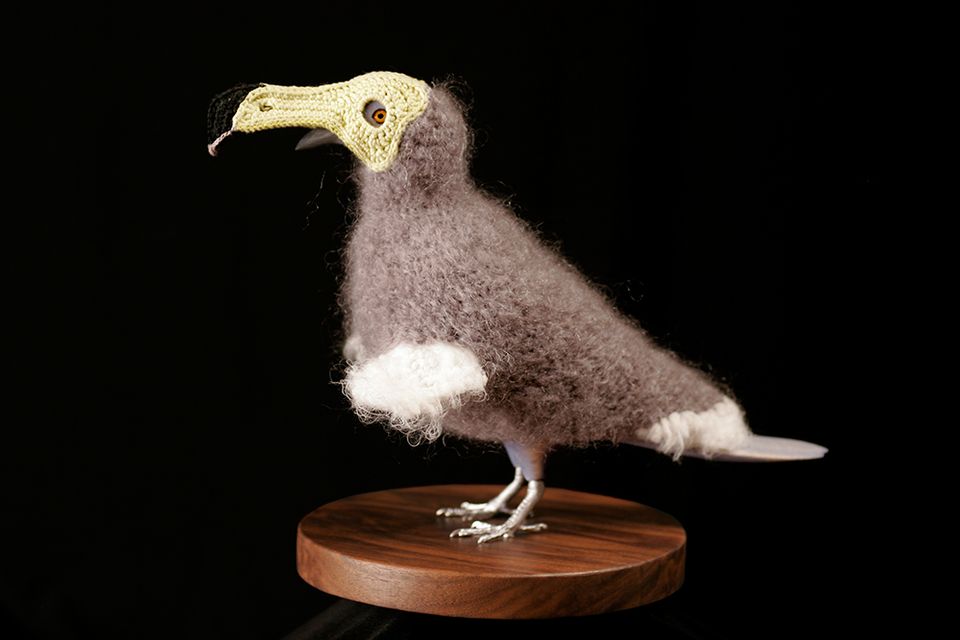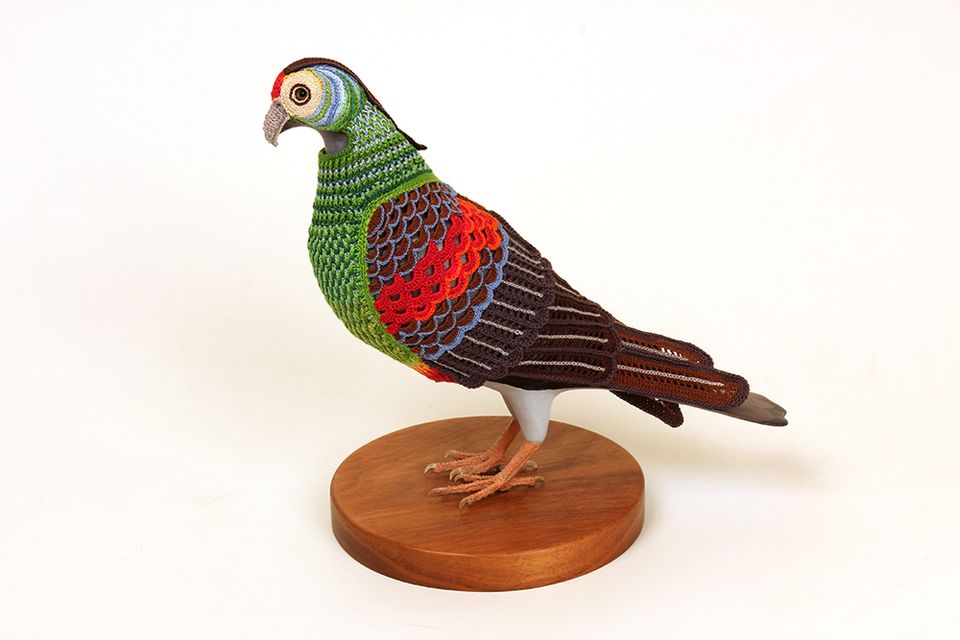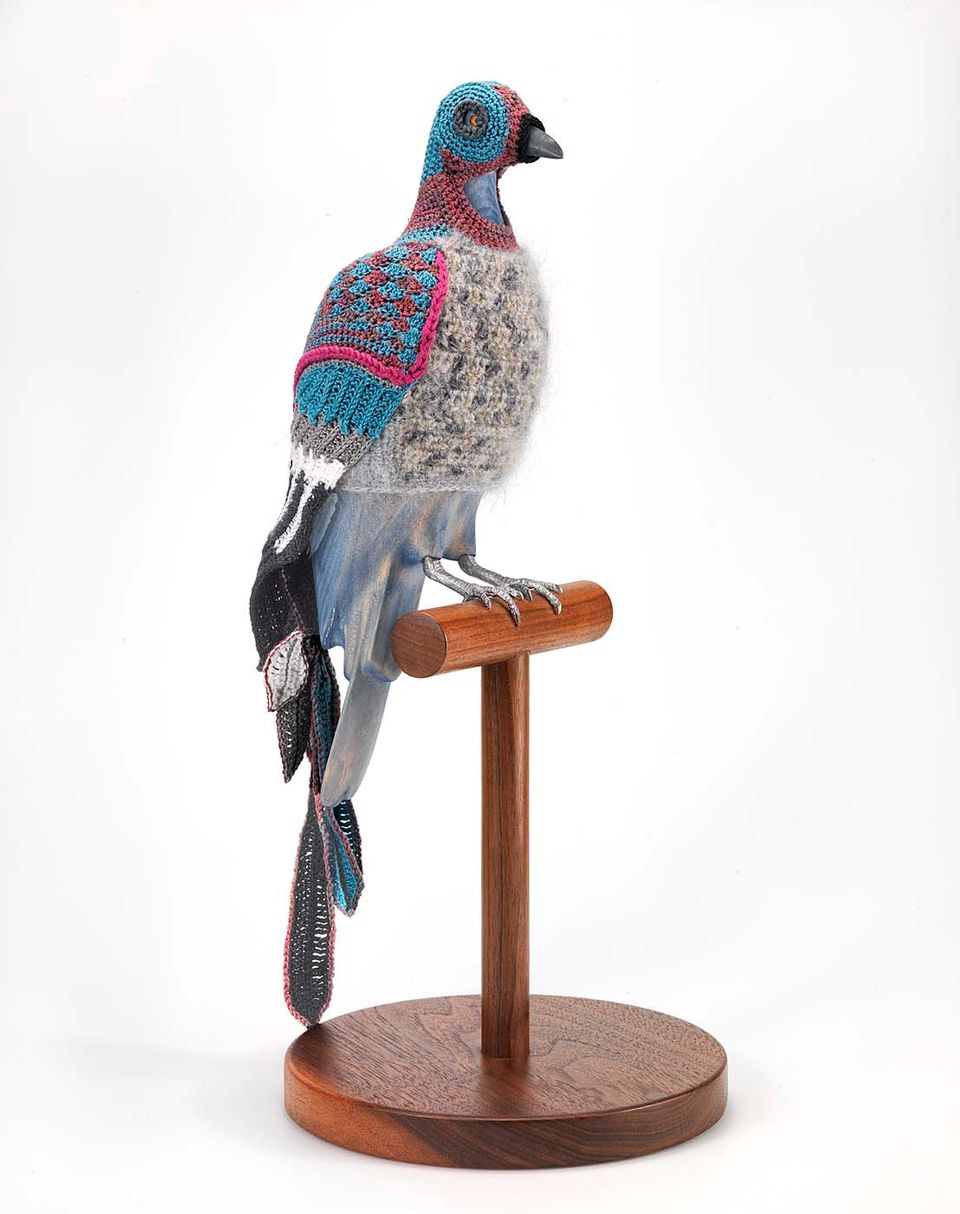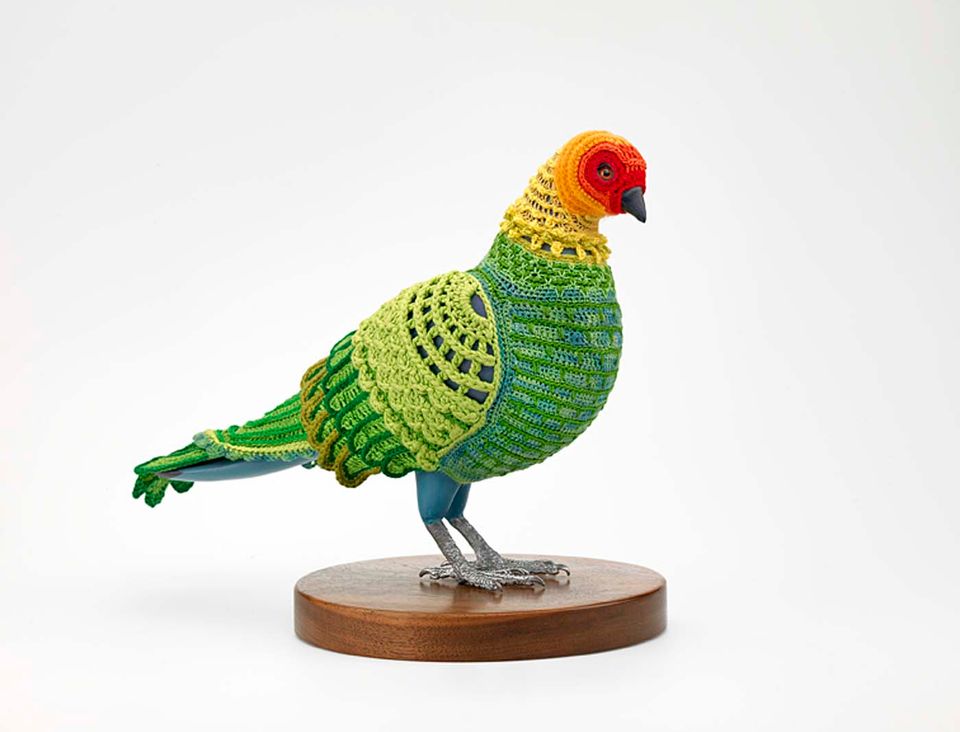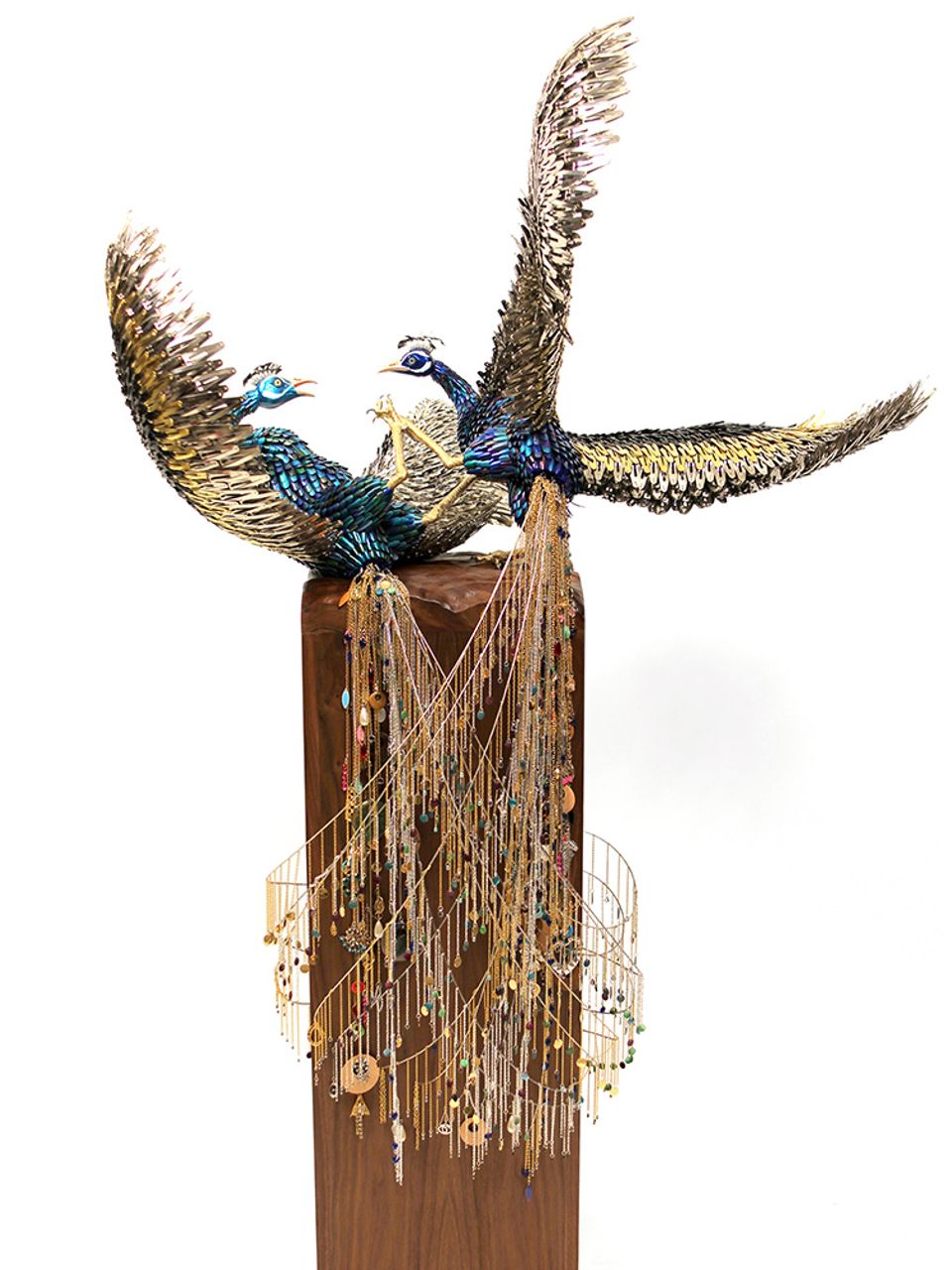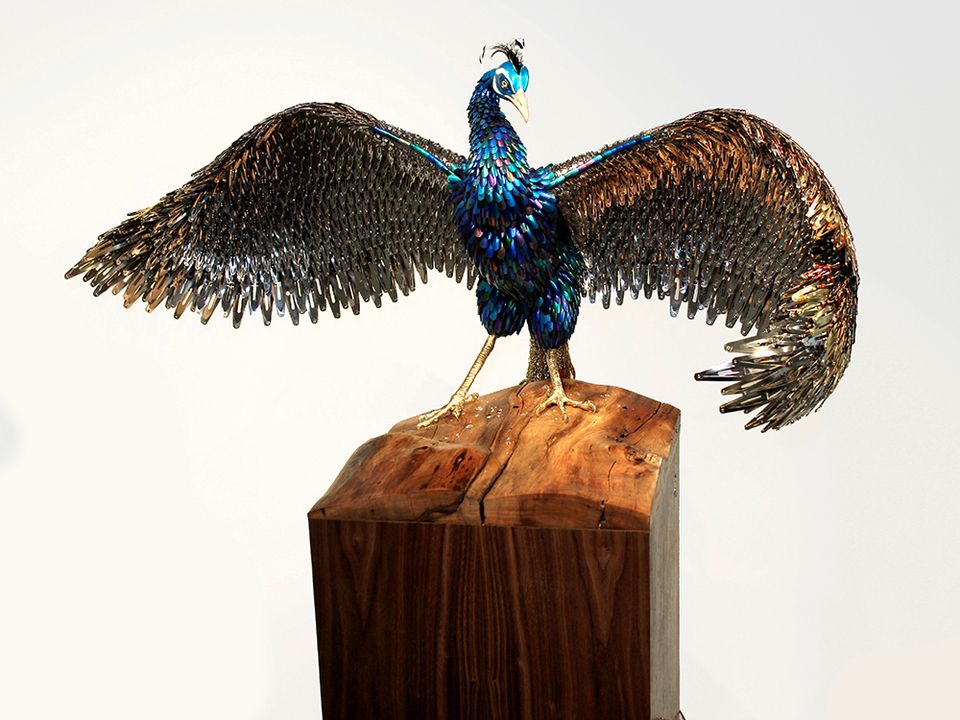Laurel Roth Hope, Biodiversity Reclamation Suit: Passenger Pigeon, 2008, crocheted yarn, hand-carved pigeon mannequin, and walnut stand, 17 x 8 x 9 in., Smithsonian American Art Museum, Gift of Daniel Greenberg and Susan Steinhauser, 2013.76.1A-B, © 2008, Laurel Roth Hope
Before embarking on a career in the arts, Laurel Roth Hope worked as both a park ranger and a natural-resource conservator. Her time spent protecting and restoring habitats inspired a body of work that examines the adaptive abilities of some species versus others. In Biodiversity Reclamation Suits for Urban Pigeons, the artist lovingly crochets "sweaters" that mimic the plumage of extinct or endangered bird species. Despite their humor and charm, these works force us to confront the futility of recovering lost biodiversity. Roth Hope displays each suit on a hand-carved pigeon mannequin as a reminder that the animals we most revile are often the ones capable of surviving in a human-made environment.














